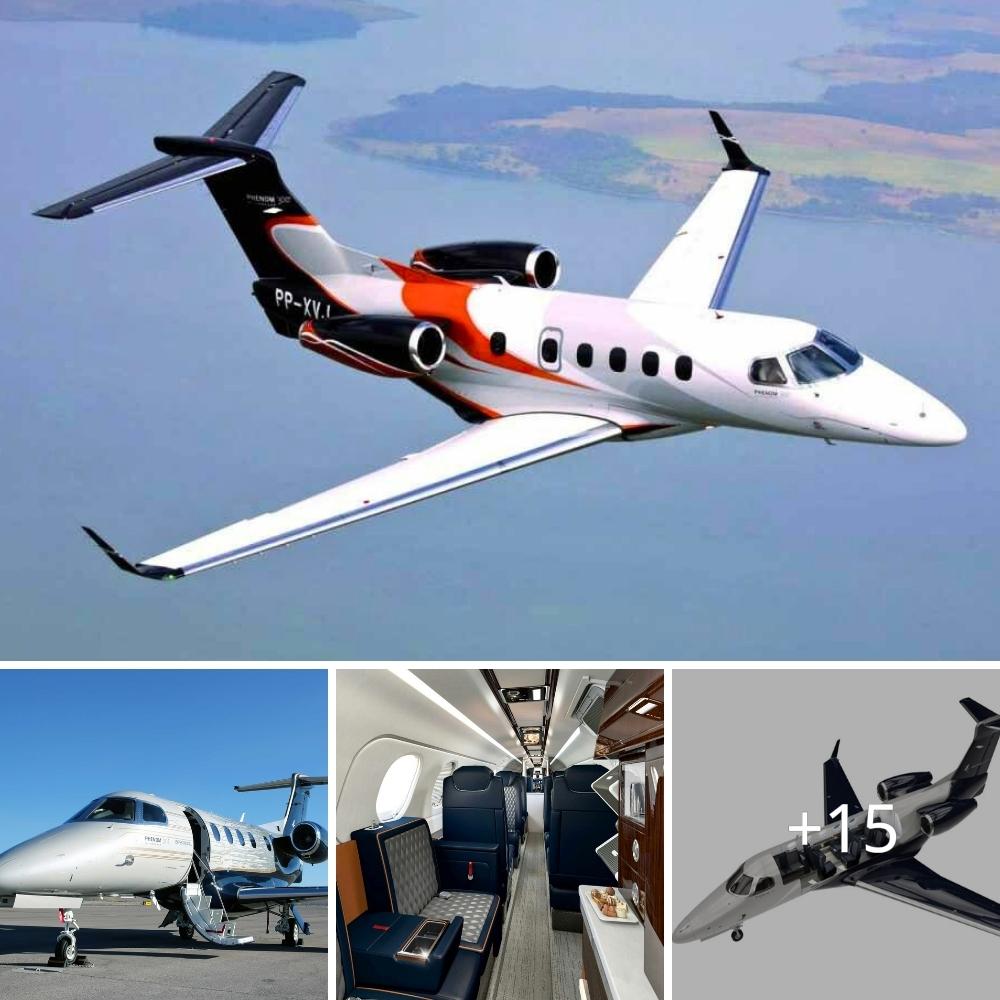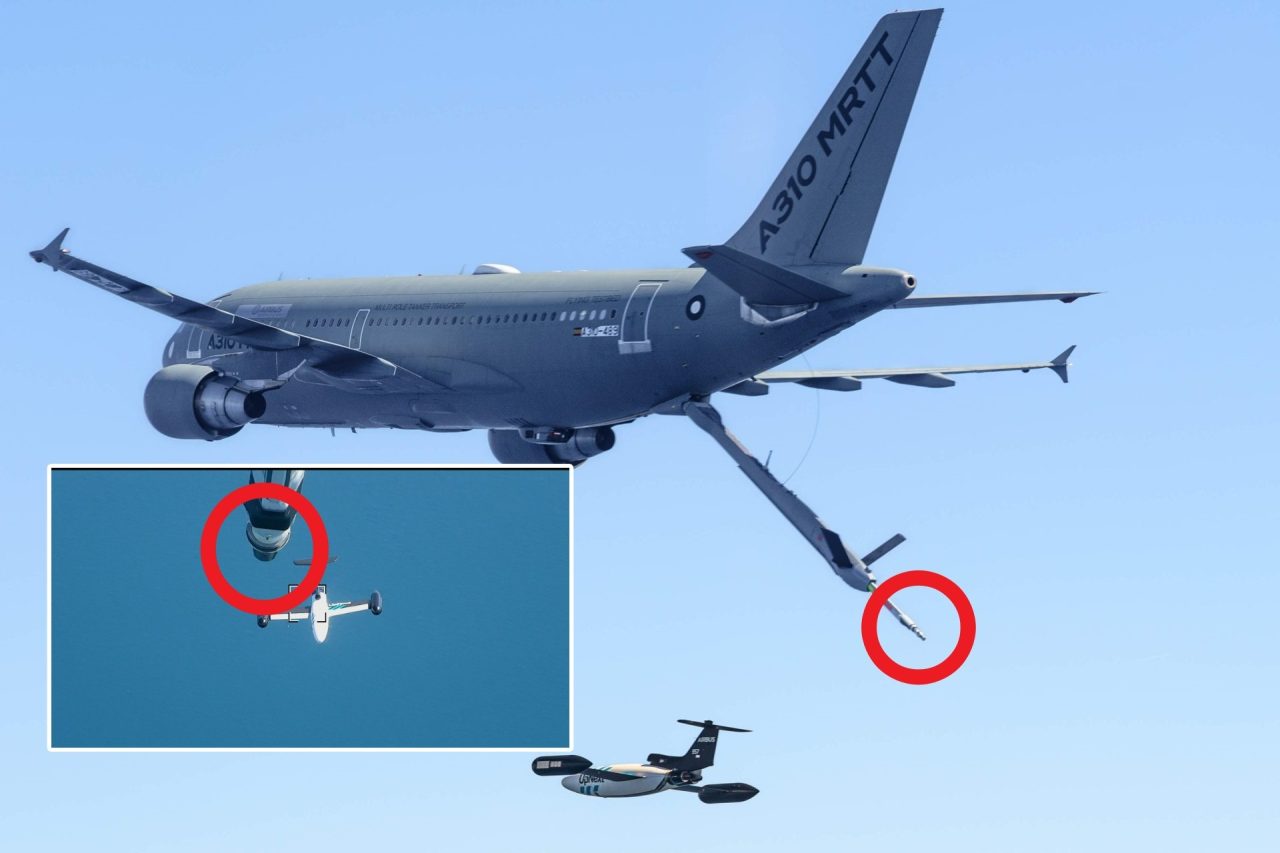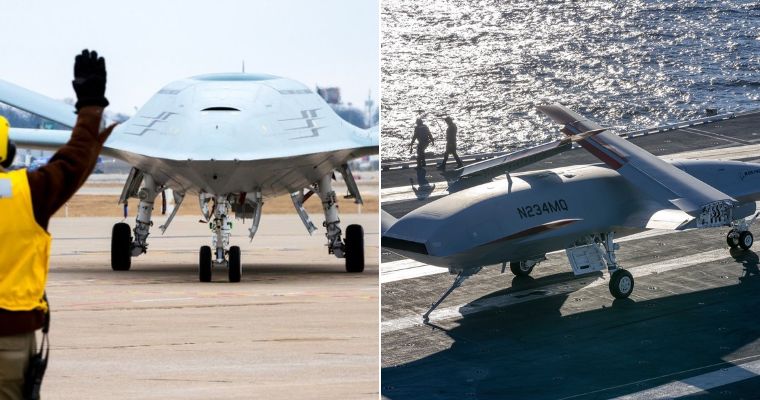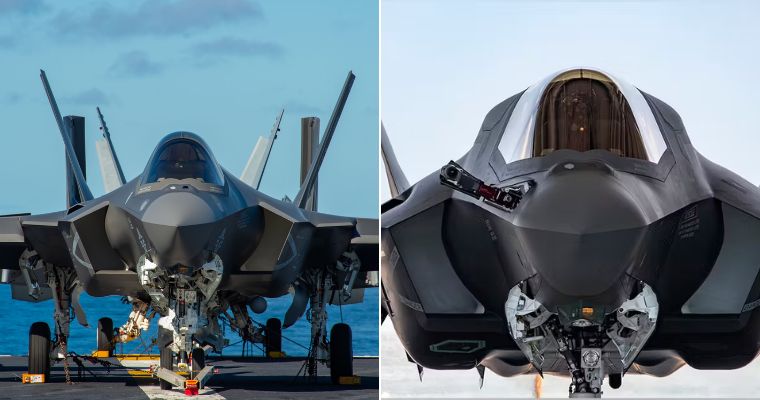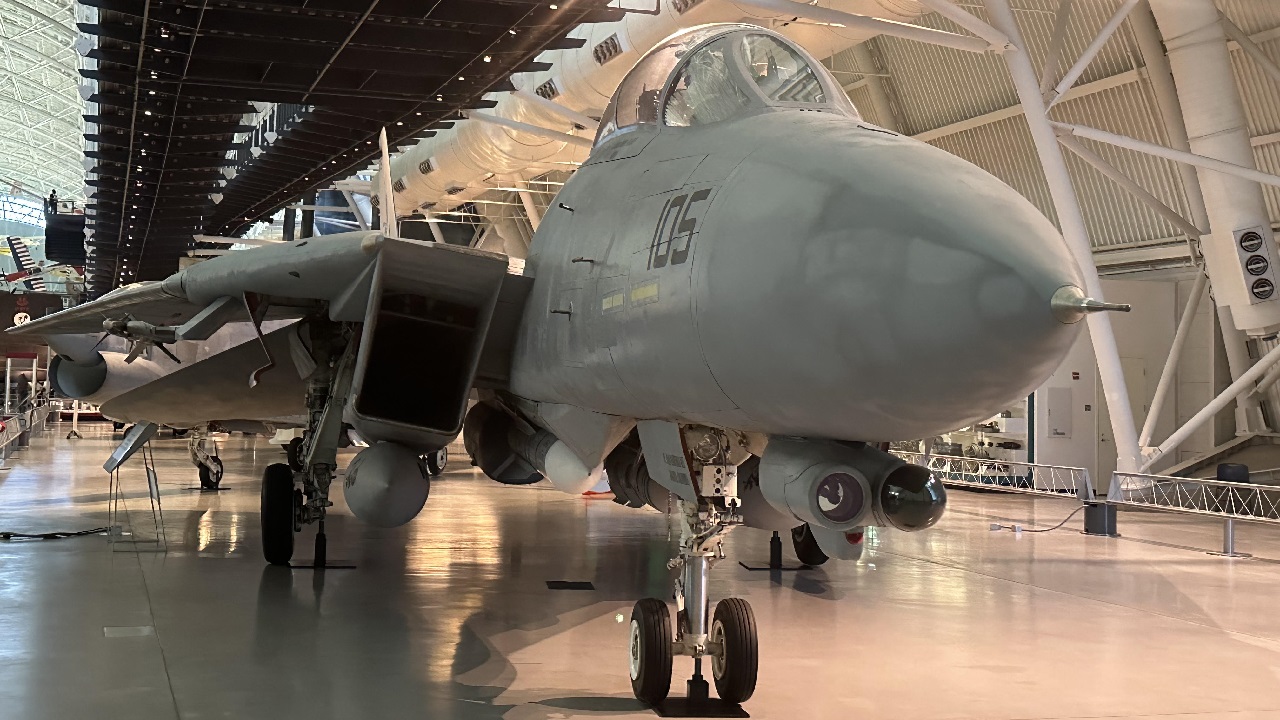
F-14 Tomcat. Image taken at National Air and Space Museum on October 1, 2022. Image by 19FortyFive.
If the Super Hornet hadn’t been built, Grumman’s next-gen Tomcat may have become a reality. We forensically recreated it in these awesome renderings.
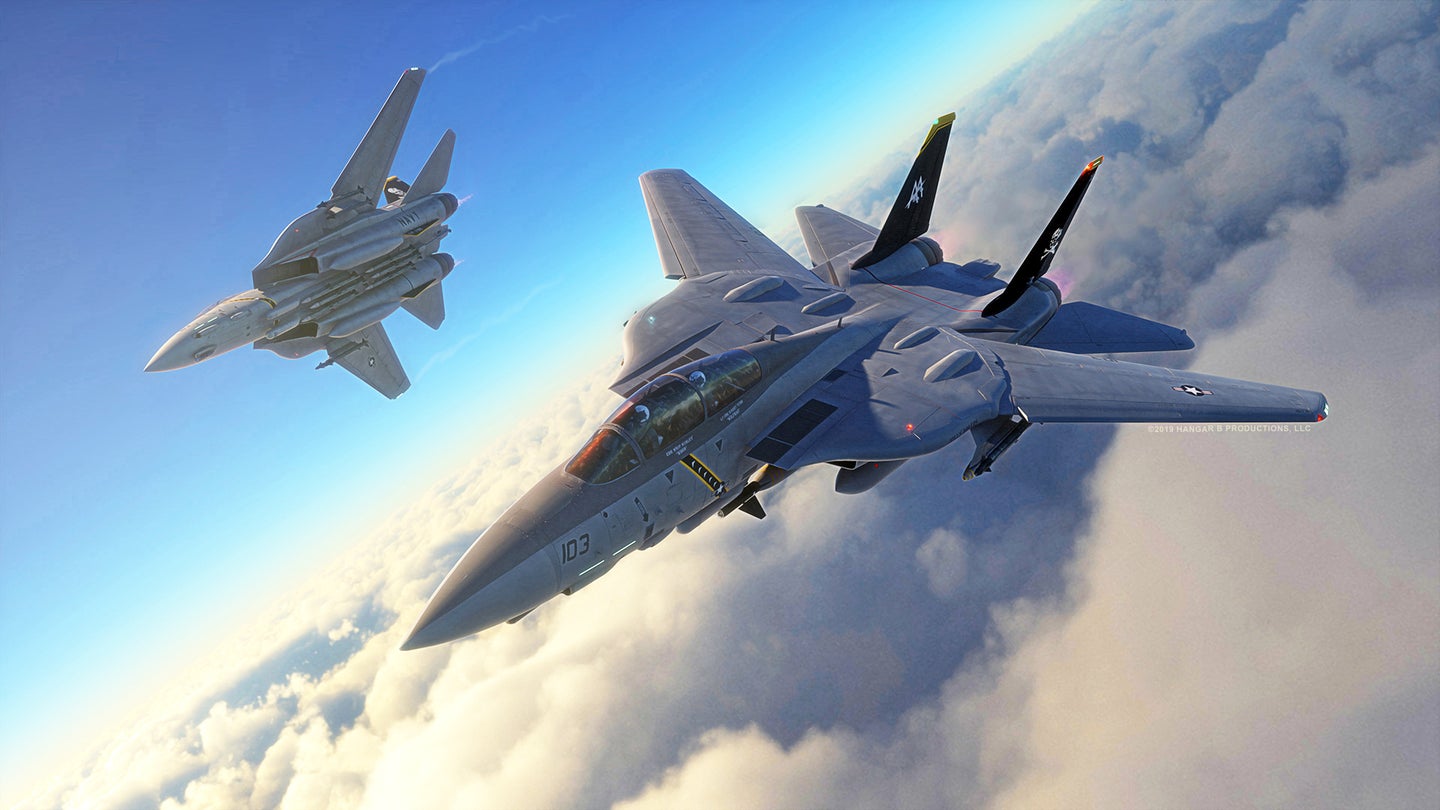
rguably the most famous and beloved American jet fighter, Grumman’s F-14 Tomcat, still firmly holds the public’s attention in its cat claws well over a decade after it was retired from U.S. Navy service. Of the many long-form, very in-depth pieces I have posted on the “Turkey Bird,” one article from years ago still makes its viral rounds and is the source of constant reader mail—The Super Tomcat That Was Never Built. It was over five years ago that I wrote that piece—the first iteration of it nearly a decade ago—and now, with the help of our favorite aerospace artist Adam Burch from Hangar B Productions, we have forensically recreated what this aircraft would have looked like if it had been built—just like we have done with the F-23 and the F-32. Not only that, but we also ventured to create theoretical ‘2010s’ upgrade of this aircraft along the same lines as what we have seen with Boeing’s latest F-15 Strike Eagle variants.
So, tighten your ejection seat straps, wipe the controls, throttle up, and snap a salute as we rocket you down the catapult into the realm of alternative aerospace history.
We need to start with a little backstory on the Super Tomcat 21 from my earlier piece. Some of the details and timelines have been debated, but generally, this is the idea of where the ST21 came from:
In our reality, the F/A-18E/F Super Hornet became the Navy’s vanguard fighter of the 21st century as a result of the boondoggle that was the A-12 Avenger program. After massive cost overruns, weight increases and huge delays, then Defense Secretary Dick Cheney axed the stealthy carrier-borne flying wing attack jet leaving a huge hole in NAVAIR’s future inventory.
This was back in 1991, the Cold War had just ended and we just got done kicking the ass of one of the world’s largest standing armies. Congress had been talked into high-risk, hugely aggressive defense programs for decades and they had had enough. The “peace dividend” sentiment was on the rise and defense budgets were beginning to fall.
With the A-6E TRAM Intruder’s retirement imminent and in the vacuum created by the canceled A-12 program, manufactures starting throwing out “logical growth” designs based on existing platforms [some were even rehashed and updated concepts from years prior]. The hope was that if aircraft manufacturers make an almost entirely new aircraft look like an existing type, while also giving them a familiar “evolutionary” designation, Congress would see the product as a low-risk, low-cost upgrade of a proven platform and thus move forward with its procurement.
At the same time the NATF program (the Navy’s equivalent to the USAF’s Advanced Tactical Fighter program) was in the works, but the costs and timeline for its development would have been massive, and in light of what happened to the stealthy A-12 “Flying Dorito,” it was clear that something simpler was needed. In the end, this “low-risk” and familiar design concept worked via the eventual development and procurement of the F/A-18E/F Super Hornet. Yet in some people’s opinion, it worked for the wrong aircraft.
The Super Tomcat 21 grew out of a previous proposal made by Grumman after the collapse of the A-12 program called Quick Strike [one of my sources says it actually came before Quick Strike, but was rehashed later]. Quick Strike was meant to be an upgrade for existing F-14s by giving them high-end navigation and targeting pods similar to the USAF’s LANTIRN system, along with upgraded ground attack modes for F-14D’s APG-71 Radar (based on the aircraft’s original AWG-9 radar) and the ability to carry more standoff weaponry like the AGM-84E SLAM and AGM-88 HARM.
Quick Strike was aimed more at cheaply picking up the Intruder’s slack than at replacing the A-12’s high-end capability, and was seen at the time as an insufficient technological leap over the F-14B and D models already in service. Also, rumors that an inexpensive clean sheet next-generation Hornet design was in the works over at McDonnell Douglas did not help Quick Strike’s attractiveness. So, Grumman came back to the Navy with a true “Super Tomcat,” called the Super Tomcat 21 [ST21].
As noted above, this also occurred around the same time that it was becoming clear that the NATF wasn’t going to happen. So, whereas Quick Strike could help replace the gap left by the Intruder, the ST21 could plug that hole and the one left by the NATF, performing its same proposed mission, albeit without the advantage of stealth and a number of other cutting-edge, high-risk technologies.
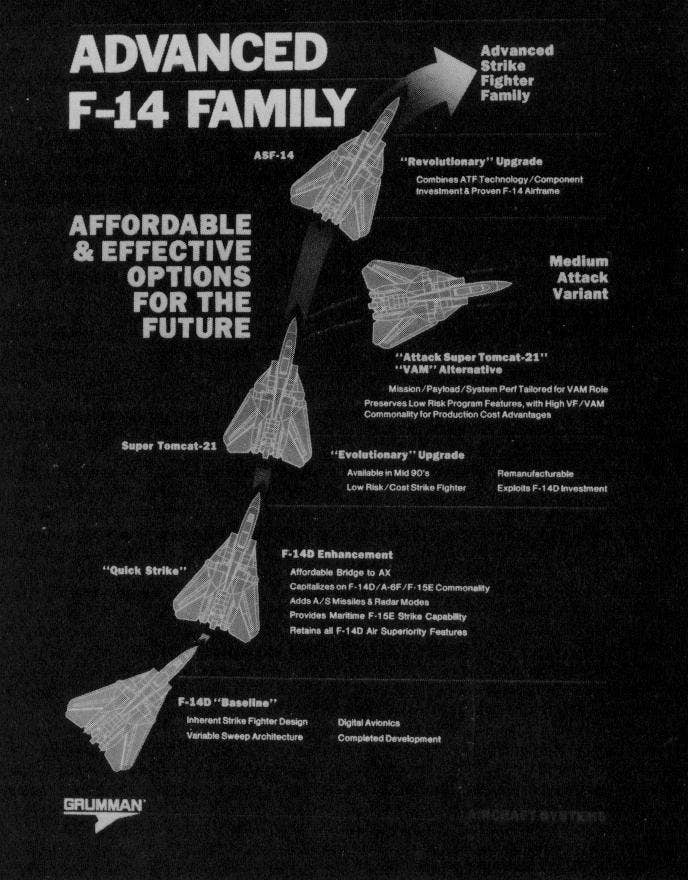 Grumman’s notional roadmap for the Tomcat. , Grumman
Grumman’s notional roadmap for the Tomcat. , Grumman
The Super Tomcat 21 would include a variety of enhancements over the F-14D and it could be produced via remanufacturing existing F-14 airframes or it could be ordered via a new-build arrangement. Most likely a combination of both options would have been used, just like the F-14D. Remember that the last new-build Tomcat had rolled off the Bethpage, New York production line in 1992, so it’s not like the F-14 inventory was long in the tooth or its production line had gone cold for an extensive period of time when the Super Tomcat 21 was being considered.
 Grumman F-14 Super Tomcat 21 model. It now hangs in the Cradle Of Aviation Museum in Garden City, NY. It gave a general arrangement for the ST21. , Public Domain via “GE Geoff”
Grumman F-14 Super Tomcat 21 model. It now hangs in the Cradle Of Aviation Museum in Garden City, NY. It gave a general arrangement for the ST21. , Public Domain via “GE Geoff”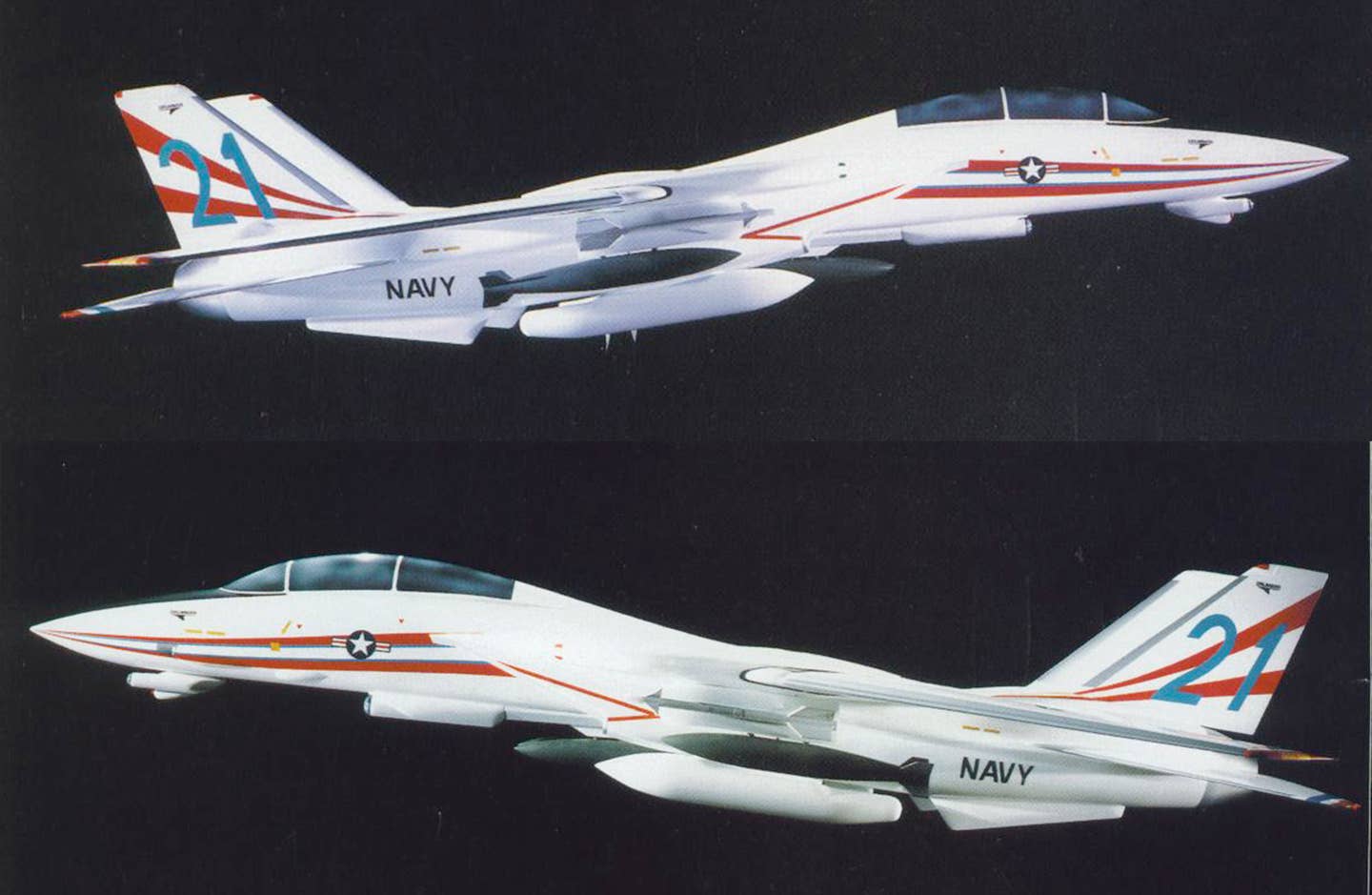 Public Domain via “GE Geoff”
Public Domain via “GE Geoff”
The ST21 would have incorporated a bunch of highly logical features that would accentuate the Tomcat’s attributes and mitigate its deficiencies. These were largely already available or relatively mature technologies. As a result, Grumman could start delivering ST21s as soon as the mid-1990s.
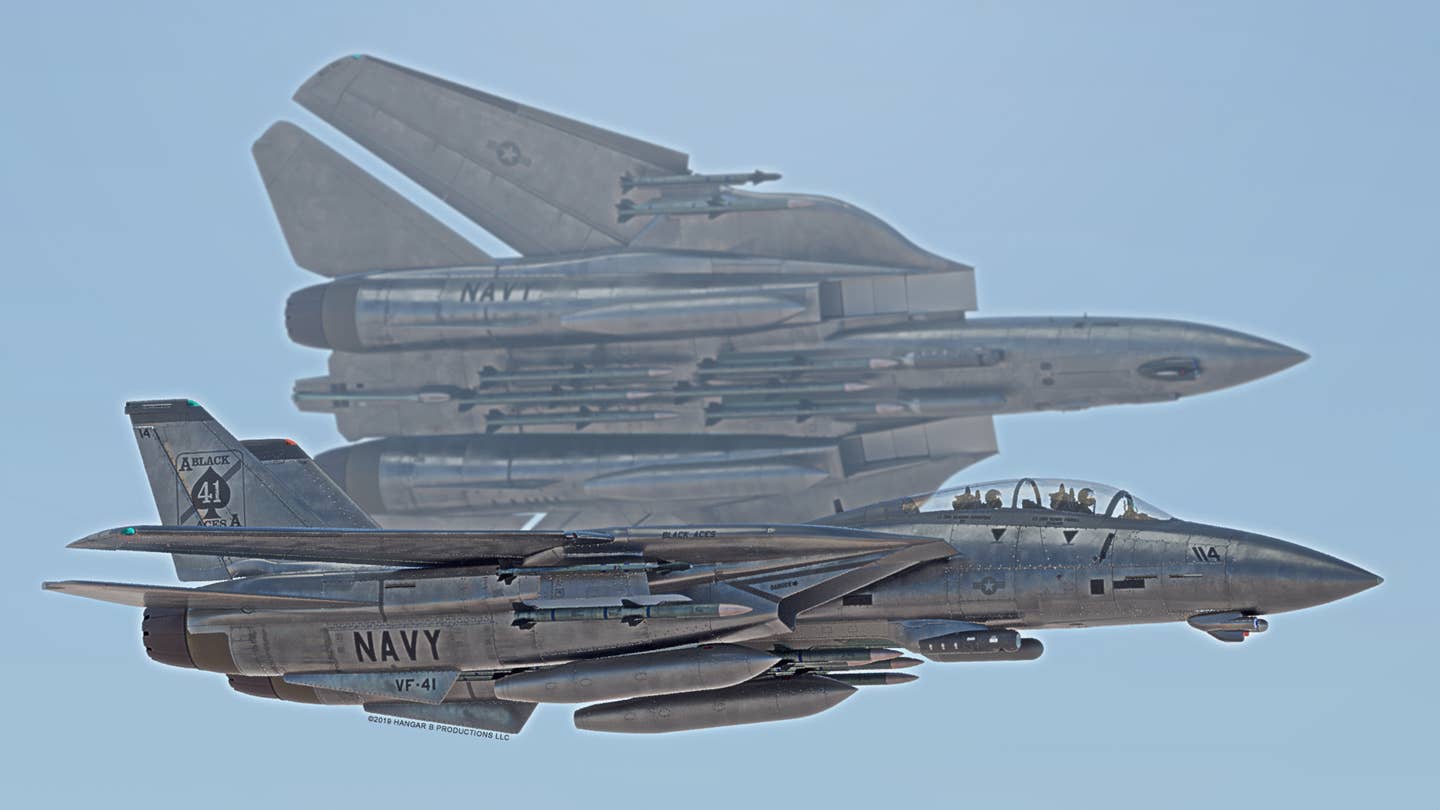 Hangar B Productions
Hangar B Productions
These proposed modifications were all documented and largely included the following:
- F110-GE-429 turbofan engines. This 29K pound thrust class engine, a modification of the same variant found in later block F-16s and now some Strike Eagle derivatives, albeit with a longer exhaust pipe tailored to the Tomcat, would give the ST21 supercruise performance (>Mach 1 without the use of gas-guzzling afterburner) while carrying a relevant air-to-air loadout. Some state M1.2-1.4 supercruise would have been possible.
- Enlarged and recontoured leading-edge gloves with an additional 2,200lbs of fuel storage each.
- Underfuselage-mounted Ford Aerospace (now Lockheed Martin) Night Owl targeting pod/FLIR and navigation pod.
- Single-piece windscreen for enhanced visibility.
- Wide-angle raster-scan HUD capable of projecting FLIR imagery.
- Glass cockpit. New mission computers and graphics processors.
- On-Board Oxygen Generations System (OBOGS)
- AN/APG-71 radar with additional upgrades ported over from the AN/APG-70 used on the F-15E. Expanded range and capabilities over the original AN/APG-71 in F-14D, which itself was an outgrowth of the AWG-9.
- Digital Flight Control System (DFCS).
- Wet wing pylons capable of carrying 300-gallon external tanks.
- Ability to carry 425-gallon external tanks on nacelle hardpoints if it was developed. Existing tank size 280 gallons.
- Larger multi-segmented fowler-flaps.
- Enlarged and extended slats on wing leading-edge.
- Bring-back to ship capacity increased from 9k lbs to 16k lbs.
- Reduced approach speed and better slow-speed control.
- Integration of latest standoff weaponry, as well as AIM-120 AMRAAM.
- Upgraded AN/ALE-47 countermeasures dispenser. Integration of the BOL countermeasures dispensers into the outboard pylons as a mission configuration option.
A host of other less prominent features would also be included. These include redesigned hydraulic and environmental control systems, and smaller changes to the Tomcat’s flight controls and aerodynamics for enhanced performance, stability, and maintainability. The ST21’s gross weight would have also increased, which may have led to slight enhancements to its already very stout landing gear. The F-14D’s radar warning and electronic countermeasures suite would have been carried over initially with some smaller updates, but that would likely have become an area of focus for future upgrades, which we will get to in a moment.
In all, the ST21 would have been a mighty beast of a multi-role fighter. With drastically expanded fuel capacity, both internally and externally, its range and loiter time would have been increased quite dramatically. Combined with supercruise in an air-to-air combat configuration, AIM-120 capability, and its modern Infrared Search and Track (IRST) system and updated Television Camera Set (TCS) ported over from the F-14D, the ST21 would have pushed the Tomcat into a new realm of air superiority fighter and fleet defender. In fact, no other fighter in the world would have possessed similar long-range target detection and identification capabilities.
The upgrades to its engines, slats, digital flight control system, windscreen, and HUD, as well as smaller tweaks to its other control surfaces including its spoilers, would have made it a more formidable close-in dogfighter. The nav/attack pod setup would have provided a low-altitude, all-weather precision deep strike capability similar to the F-15E. Standoff weapons integration would have expanded the carrier’s tactical reach dramatically, as well, and those new weapons would have fit perfectly with the Tomcat’s heavy load carrying capabilities. It may have even seen the AIM-54 Phoenix long-range air-to-air missile get upgraded again and kept in service longer to take advantage of the ST21’s hugely powerful sensor suite.
Really, the ST21 represents what many always dreamed of the Tomcat being while also keeping its capabilities firmly grounded in technology that was readily available at the time. In many ways, technology finally would have caught up with the Tomcat’s airframe design. The ST21 configuation leaves a lot of room for future upgrades that could take its individual and force multiplier capabilities to yet another level.
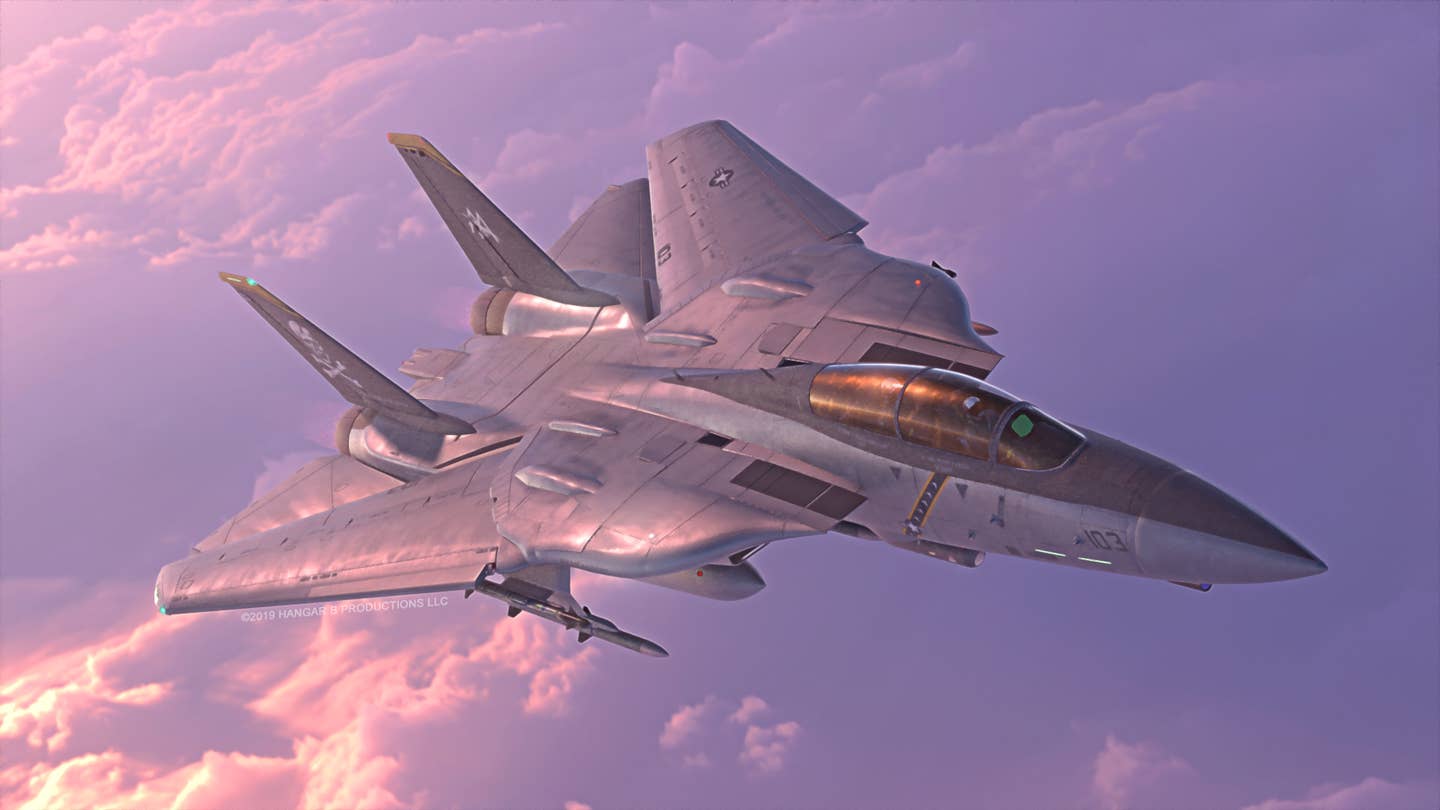 The Super Tomcat 21. , Hangar B Productions
The Super Tomcat 21. , Hangar B Productions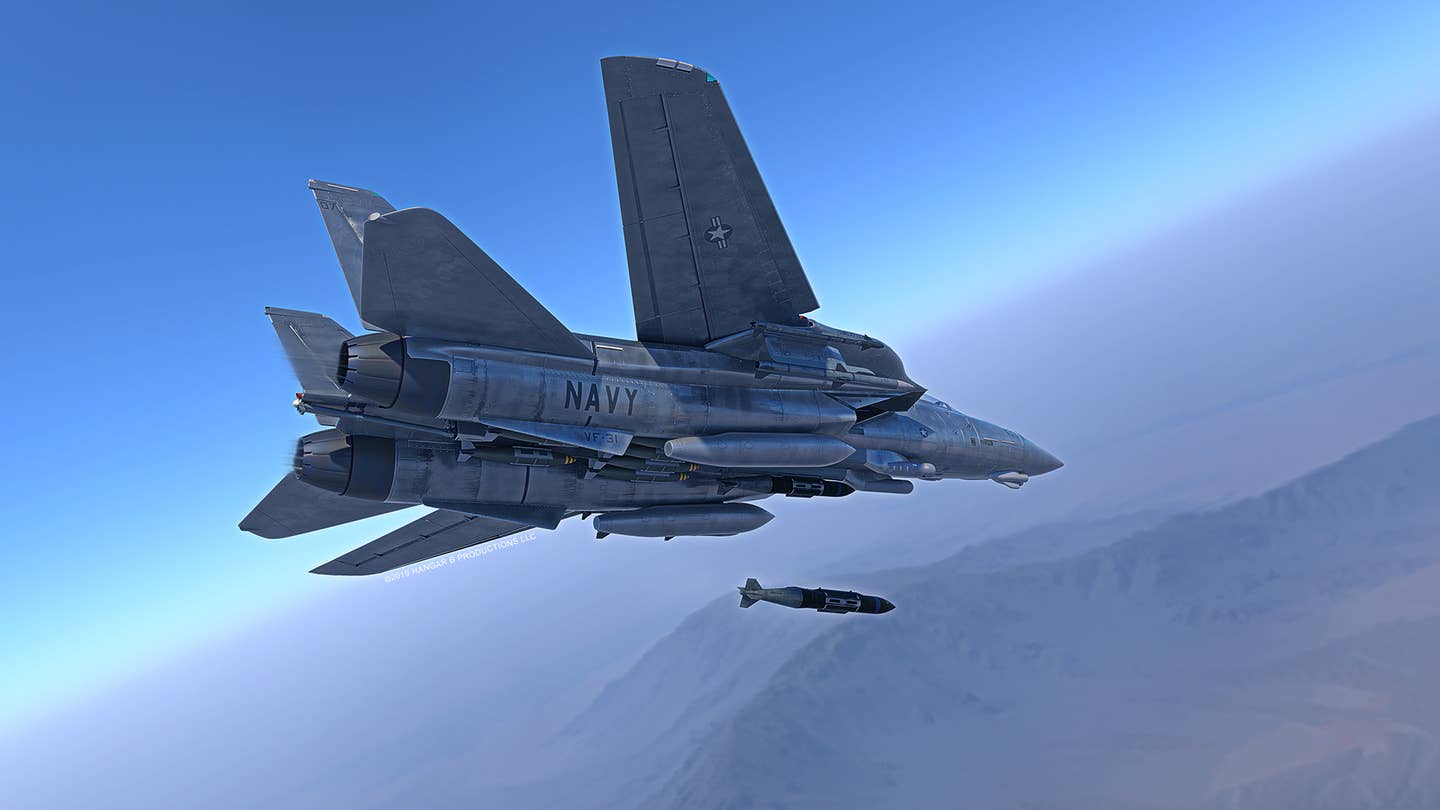 The Super Tomcat 21. , Hangar B Productions
The Super Tomcat 21. , Hangar B Productions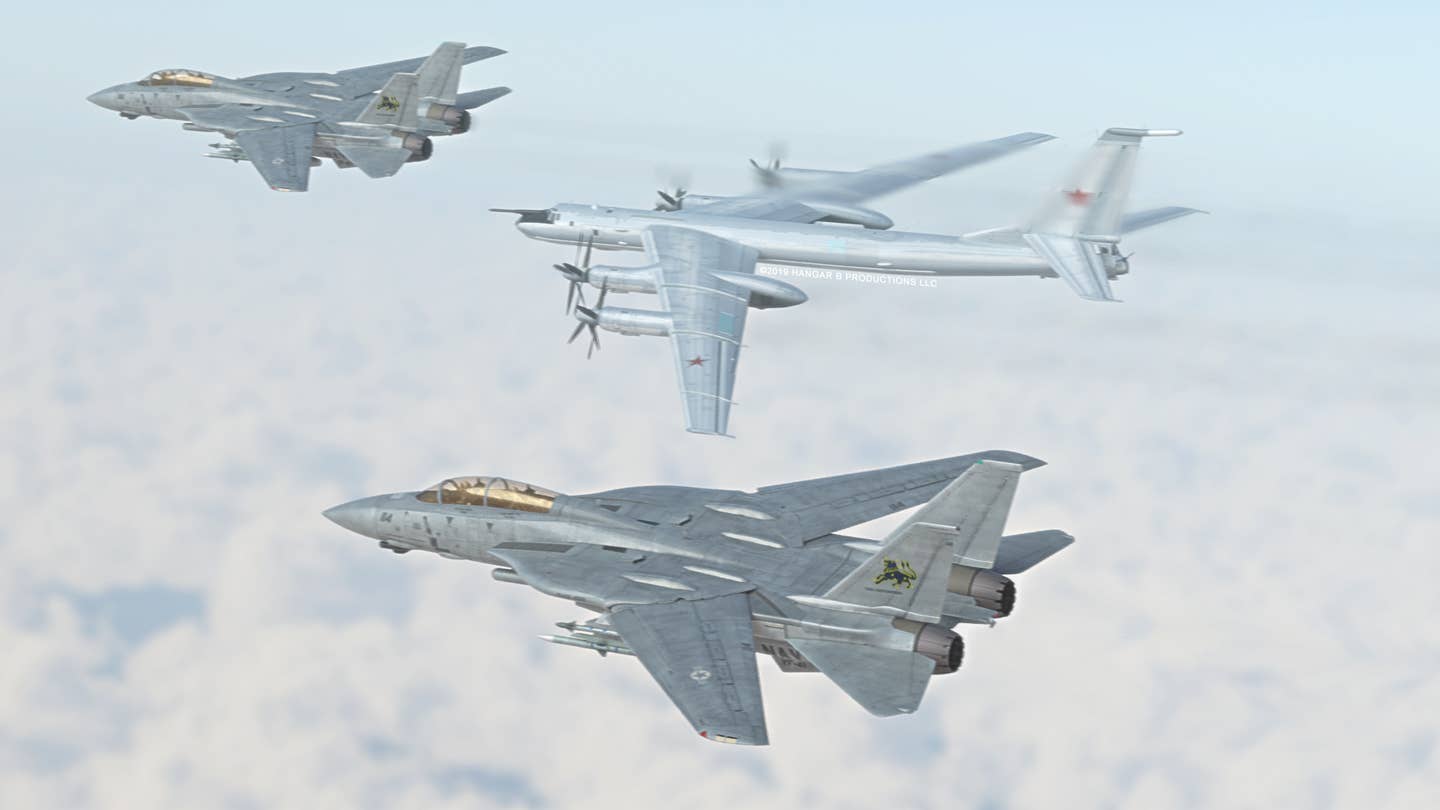 The Super Tomcat 21. , Hangar B Productions
The Super Tomcat 21. , Hangar B Productions The Super Tomcat 21. , Hangar B Productions
The Super Tomcat 21. , Hangar B Productions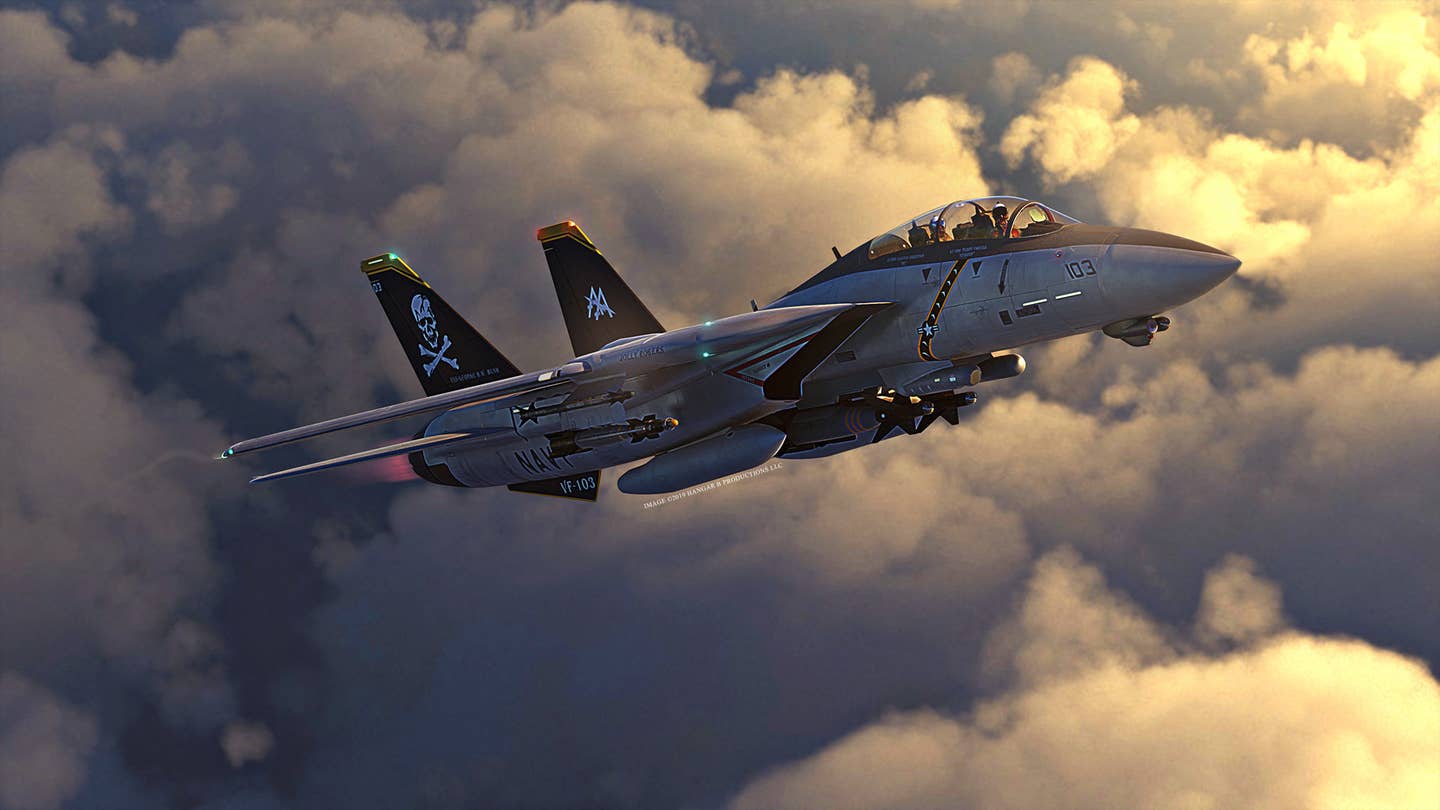 The Super Tomcat 21. , Hangar B Productions
The Super Tomcat 21. , Hangar B Productions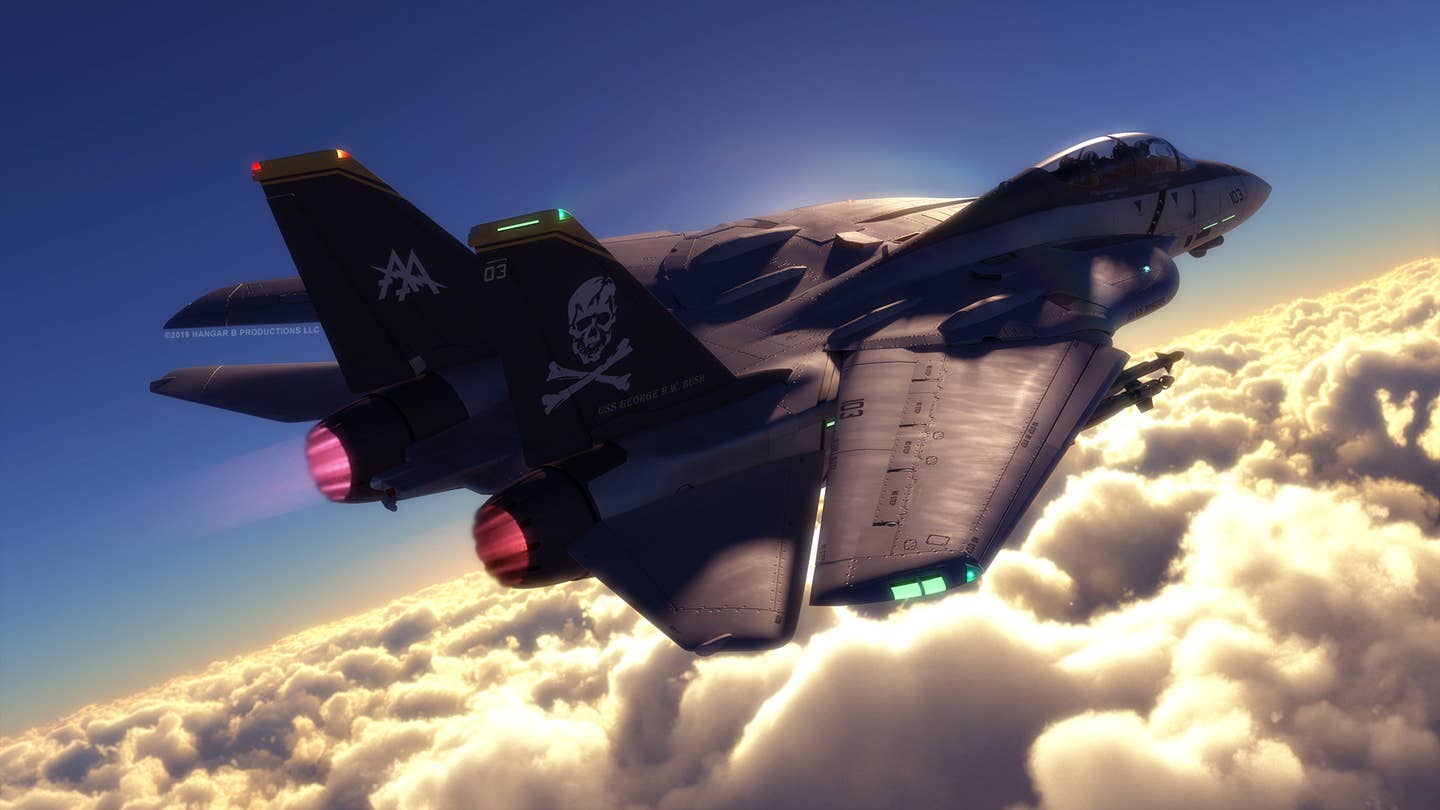 The Super Tomcat 21. , Hangar B Productions
The Super Tomcat 21. , Hangar B Productions
During the early 1990s, even a more drastic upgrade of the Tomcat was being floated as part of Grumman’s future roadmap that did not include the NATF—the Advanced Strike Fighter 14 (ASF-14). This aircraft would have been a total redesign of the Tomcat leveraging advanced technologies from the NATF initiative. This would have been a costly new-build endeavor that would have likely gone significantly beyond what McDonnell Douglas did with their Super Hornet offering.
In reality, a follow-on to the ST21 in the form of the ASF-14 was unlikely even if the ST21 would of been procured. But if the Navy were to of invested heavily back into the Tomcat platform in the form of the ST21 in the mid-1990s, that aircraft would have very possibly seen a mid-life upgrade with a similar suite of technologies as what Boeing has injected into its F-15 line via the F-15SA as well as the F-15QA and the F-15X, to a bit lesser degree. This would likely have involved upgrading existing ST21 airframes with new technologies in a relatively economical manner.
Based on this conjecture, we carefully, realistically, and rationally put together what the ST21 would have likely grown into by the 2010s. We named this upgraded aircraft the Super Tomcat 2010, or ST2010.
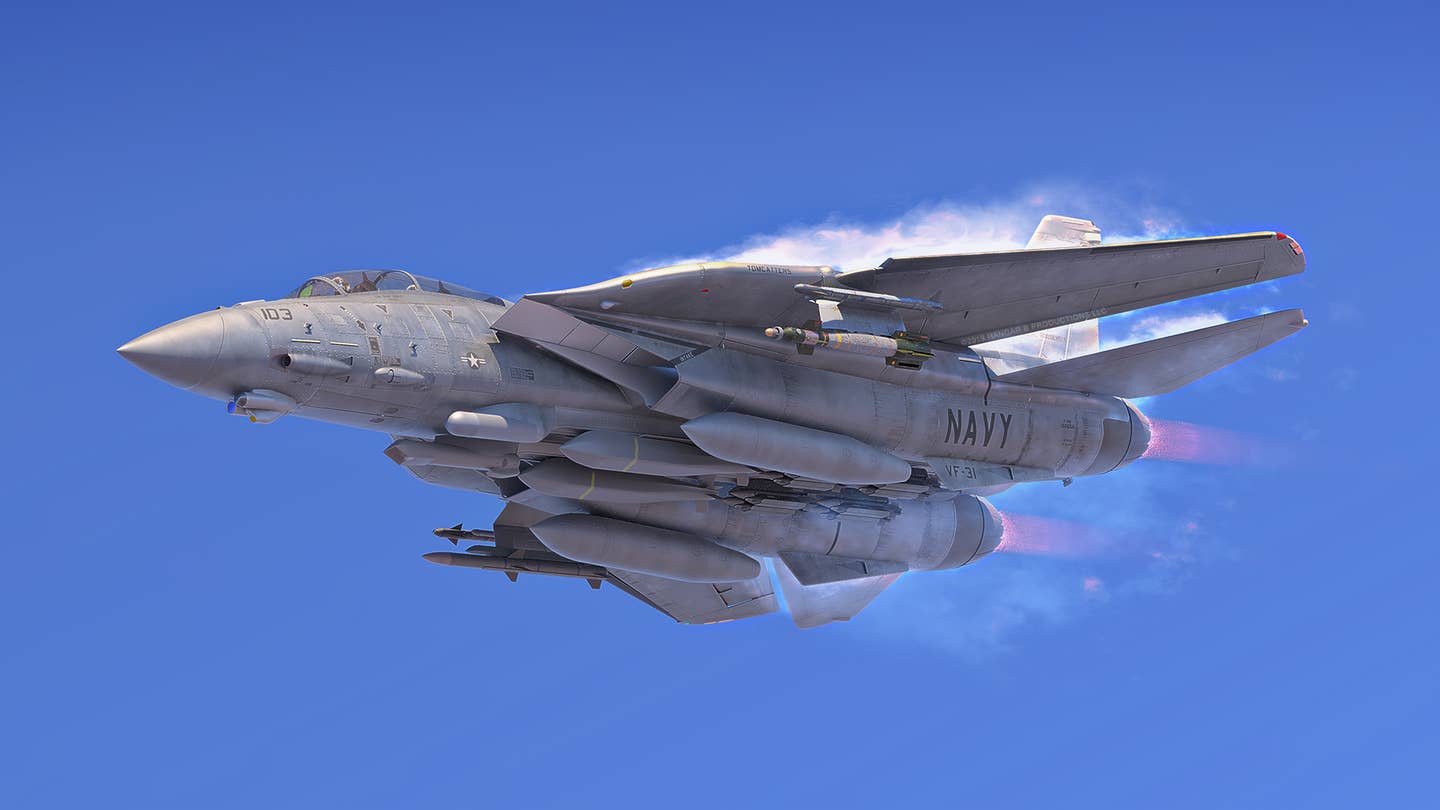 Hypothetical Super Tomcat 2010, Hangar B Productions
Hypothetical Super Tomcat 2010, Hangar B Productions
This upgrade would hypothetically expand upon the existing ST21 in the following ways:
- Active Electronically Scanned Array (AESA) radar. The F-14 has the largest radar aperture of any American fighter ever. As such, the ST2010 would have sported the most powerful AESA of any fighter in the world. A variant of the AN/APG-63(V)3 used by the Eagle, with enhanced multi-mode capabilities, just like the AN/APG-82 that the F-15Es are receiving today, but with a bigger antenna array, would have been the most likely system to satisfy this requirement. The radome would be slightly redesigned to accommodate the AESA radar set.
- AN/APX-111(V) “pizza box” identification friend or foe (IFF) interrogator/transponder found on the Super Hornet mounted in the same position on the ST2010’s nose.
- Both crew stations equipped with Digital Joint-Helmet Mounted Cuing System (D-JHMCS II) helmet-mounted displays with night vision capability. Full AIM-9X capability.
- Upgraded cockpit displays with enhanced large area display in the RIO’s section.
- Sniper Advanced Targeting Pod replaces Ford Aerospace Night Owl targeting pod or whatever would have been in service at the time. Nav pod is retained or removed depending on mission needs.
- Beyond-line-of-sight SATCOM receive capability that can push real-time threat, blue-force tracking, and critical mission information to the Super Tomcat. It can then push parts of that information out to any platform within line-of-sight with Link 16 connectivity. The EA-18G Growler was built with this capability, which is now in its second generation.
- Missile Approach Warning System (MAWS). With apertures on the upper nose, lower nose pod, leading-edge gloves, upper fuselage, lower fuselage, and atop the ST2010’s twin tails, this system provides total situational awareness of incoming missiles and other threats (potentially DAS upgradable in the future) and is tied into the aircraft’s defensive suite.
- Expanded AN/ALE-47 expendable countermeasures capacity.
- Fully integrated towed fiber-optic decoys in housings near the rear of the ST2010’s under-fuselage ‘tunnel.”
- Retains original speed-brake for terminal phases of flight, but digital flight control system can execute speed brake functionality using deflection of control surfaces and upper speed brake surface.
- Replace AN/AAS-44 infrared search and track system with IRST21.
- Updated mission computer and graphics display processors.
- Integration of latest standoff weaponry such as Small Diameter Bomb, JSOW, SLAM-ER, WCMD, Laser JDAM, etc.
- Digital electronic warfare system. Modern, fully integrated digital electronic warfare and threat awareness suite that will also control countermeasures, towed decoys, AESA electronic warfare modes, and more. The RIO’s large display will allow them to work as mission managers with sensor, electronic warfare suite, data-link, and satellite data-link information displayed for maximum situational awareness.
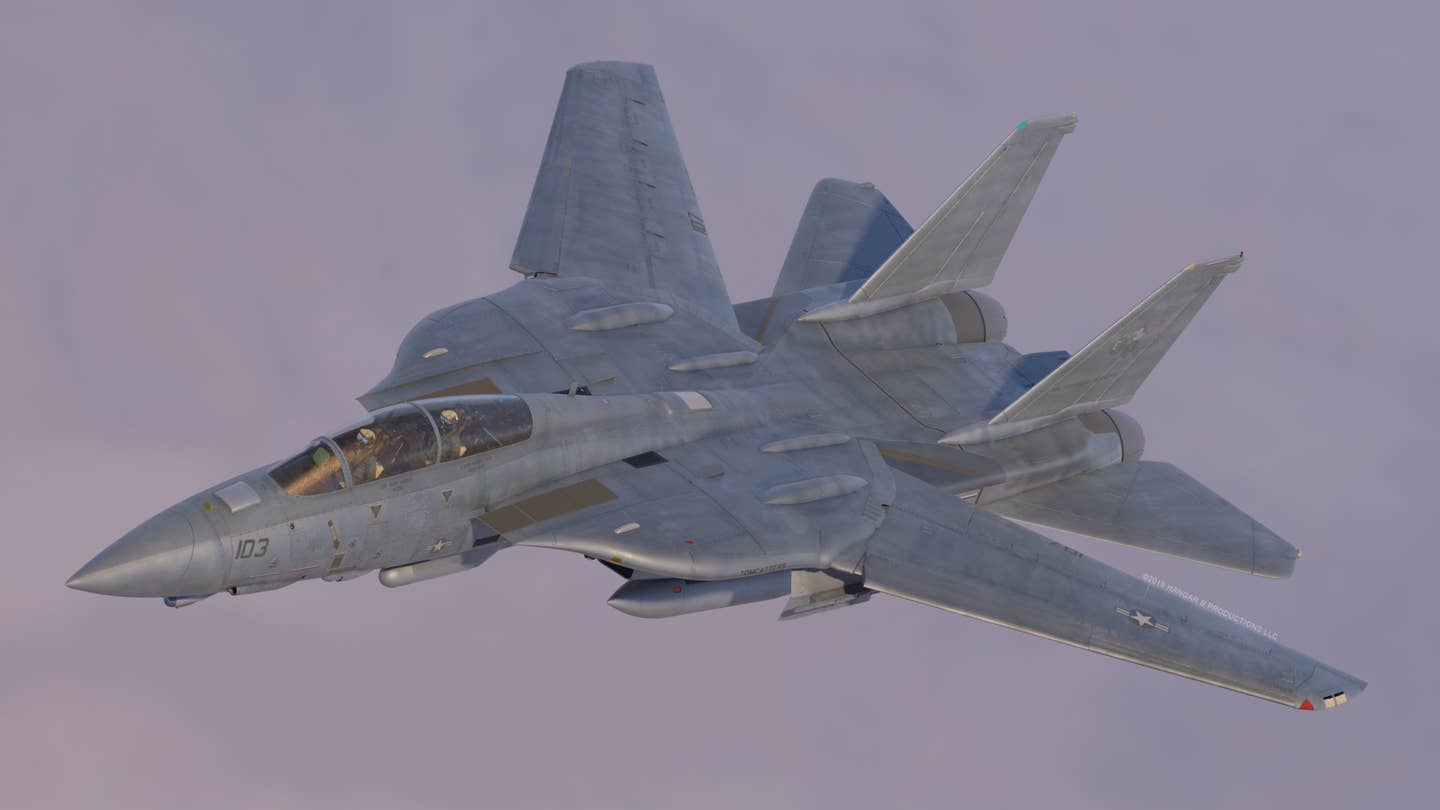 Hypothetical Super Tomcat 2010, Hangar B Productions
Hypothetical Super Tomcat 2010, Hangar B Productions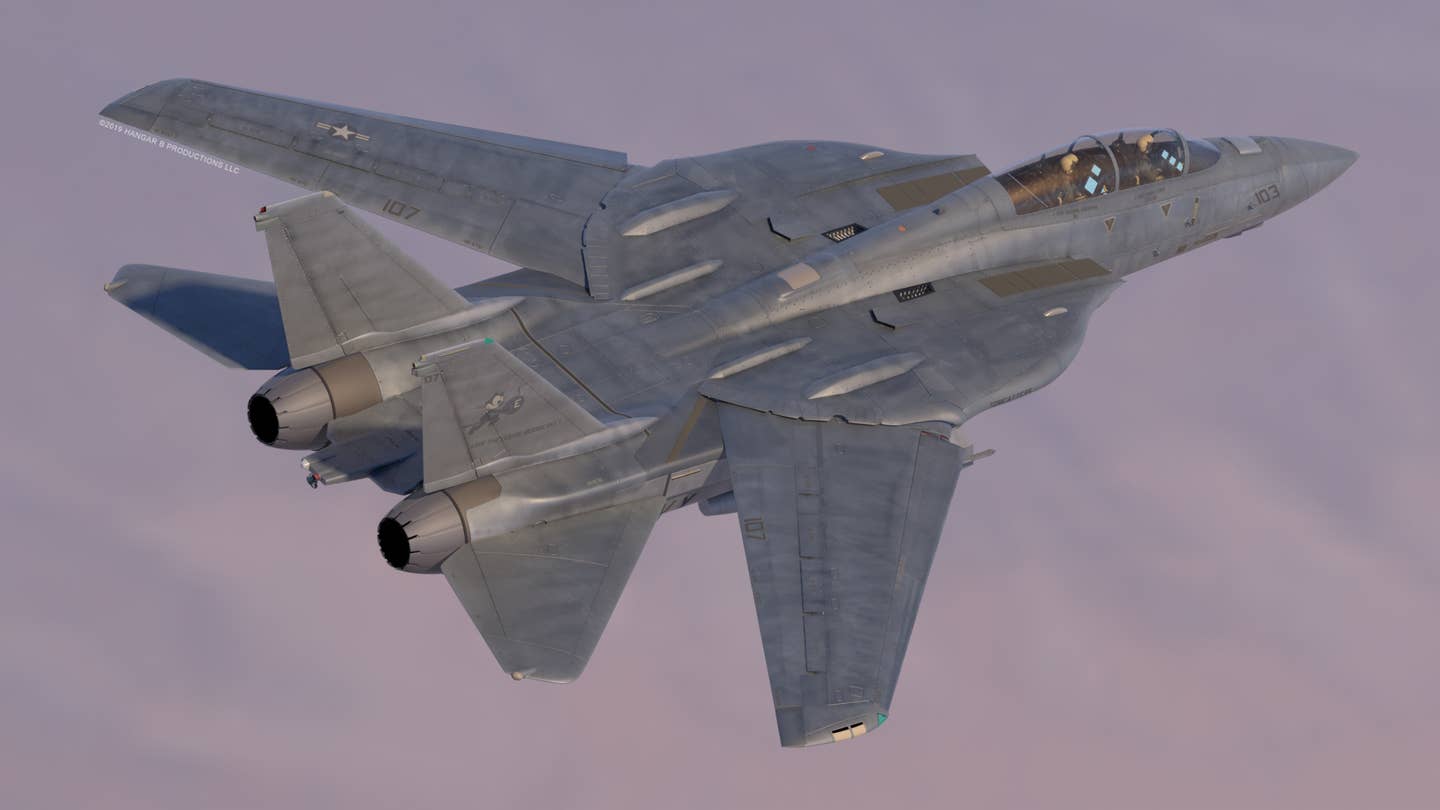 Hypothetical Super Tomcat 2010, Hangar B Productions
Hypothetical Super Tomcat 2010, Hangar B Productions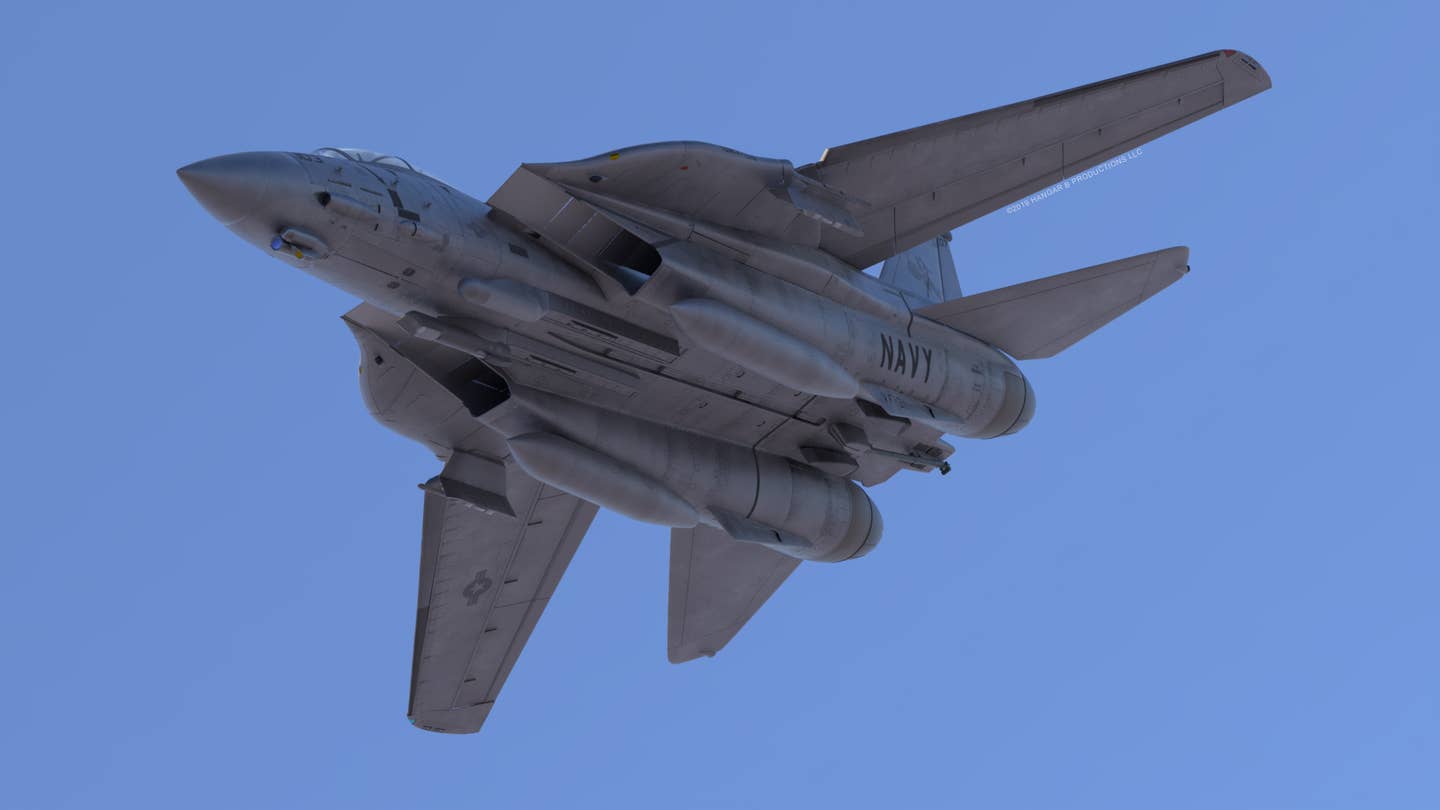 Hypothetical Super Tomcat 2010, Hangar B Productions
Hypothetical Super Tomcat 2010, Hangar B Productions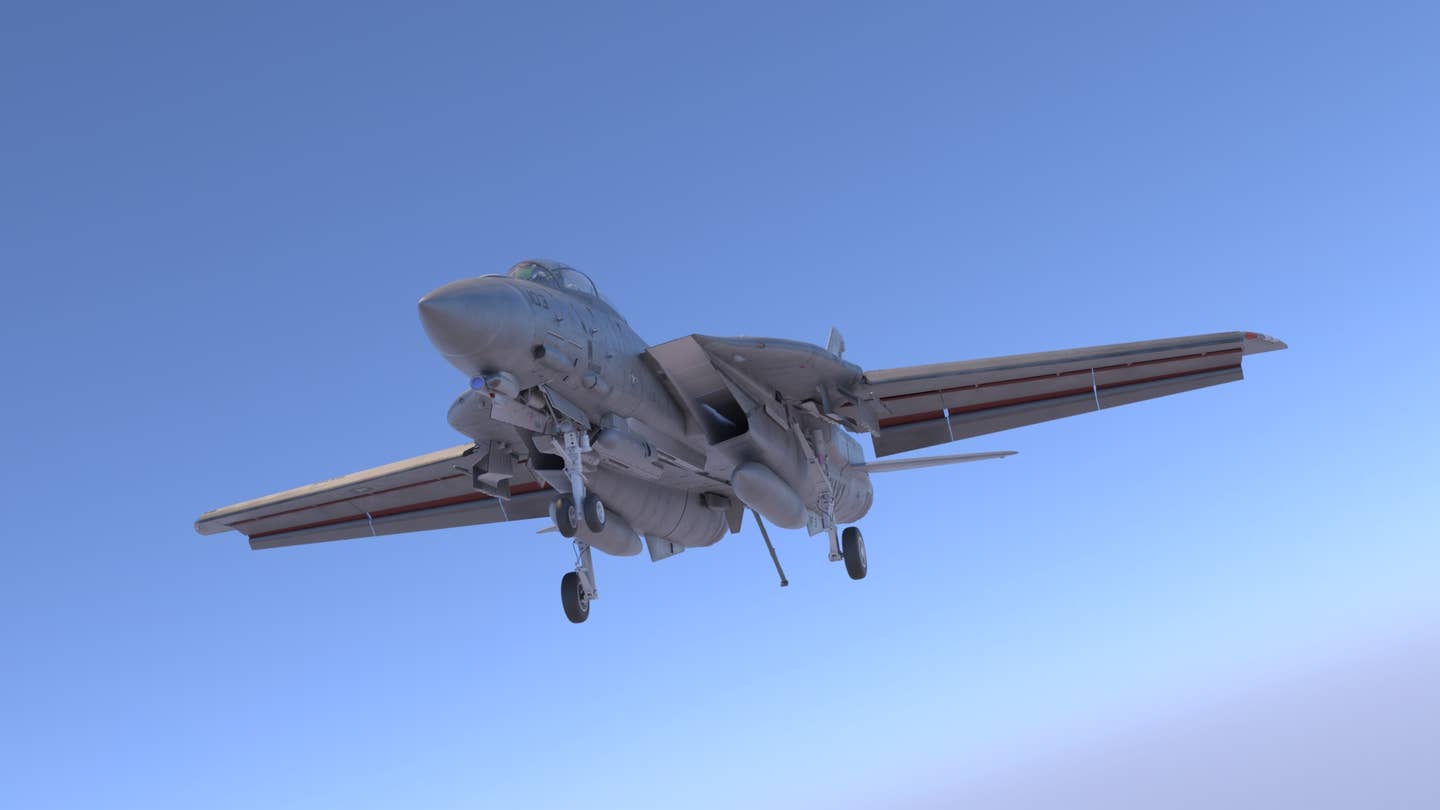 Hypothetical Super Tomcat 2010, Hangar B Productions
Hypothetical Super Tomcat 2010, Hangar B Productions
The ST2010 would be as much about what the platform could do as a force multiplier than about its own individual combat capabilities. This aircraft would field the most powerful sensor suite on any aircraft in American fighter history. With the largest fighter AESA array in the inventory, the latest infrared search and track sensor, the ability to receive threat data and other information via satellite from all the Pentagon’s networked assets, and possessing its own highly-sensitive electronic surveillance and warfare system, the ST2010 could broadcast all that data to other less capable platforms that are within its line-of-sight. Basically, we are talking about a flying and fighting primary sensor and data-exchange node here as much as just a more capable fighter. The concept isn’t all that unique as the USAF is adapting it to their own F-15C/D fleet as part of the Talon Hate program.
The ST2010 would also be more survivable than its predecessor, not only due to its advanced digital electronic warfare suite, but via expanded expendable countermeasures capacity, towed fiber-optic decoys, larger cockpit displays, and 360-degree missile approach warning system (MAWS). It would also feature Digital-Joint Helmet Mounting Cueing Systems in both cockpits and full AIM-9X capability.
 Hypothetical Super Tomcat 2010, Hangar B Productions
Hypothetical Super Tomcat 2010, Hangar B Productions
Another logical addition includes the replacement of the NITE OWL targeting pod with a Sniper Advanced Targeting Pod and the ability to carry the latest standoff weaponry, including JSOW, SDB, AIM-9X, AIM-120D, and more. The ST2010’s use as a heavy lifting and long-hauling weapons truck for large outsized payloads would also be taken into account. It could find great utility as the fleet’s hypersonic weapons hauler as well-performing its more traditional duties. But it has to be stressed again that the ST2010 hypothetical upgrade isn’t all about kinetic capabilities, it is about working as a fast-flying sensor and networking platform.
Fully tanked up, it would have very long endurance and it could fully protect itself while traveling into and out of the target area. The pilot could deal with air-to-air and air-to-ground threats while the RIO ‘quarterbacks’ the fight—enabling other assets in the air wing and across the joint force. Just the ST2010’s AESA radar alone can execute air-to-air and air-to-ground functions seamlessly and concurrently, and we are talking about it possessing a range of many hundreds of miles here. In fact, the ST2010 could work as a mini-AWACS if need be.
Most importantly, it features technologies that were in a mature or near-mature state around the early part of this decade. As such, we are talking about a huge capability boost here via a low-risk, high-reward upgrade that once again builds on the F-14’s unique attributes.

This patch would have been reason enough to build the ST21!, Hangar B Productions
So, there you have it, what could have been when it comes to America’s most beloved jet fighter. In the end, the Navy got a good plane in the Super Hornet, but it just can’t compare in terms of raw performance and other key attributes that the ST21 would have brought to the table. Who knows, maybe in an alternative universe there are nuclear supercarriers that had their decks packed with upgraded and new build legacy F/A-18Cs and ST21s as the new millennium settled in. For the rest of us in the prime timeline, what could have been will just have to remain something to ponder, or in Adam Burch’s case, to render in spectacular and highly detailed fashion.
Source: thedrive.com



